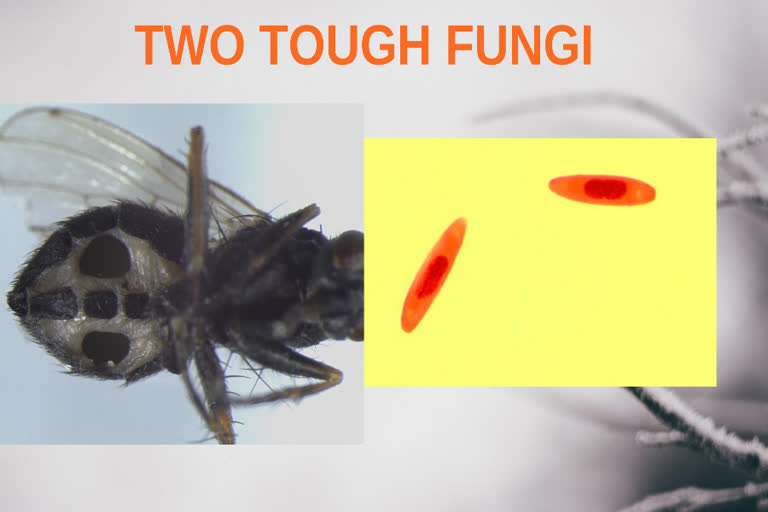Copenhagen, Denmark: Spores (conidia) of Strongwellsea acerosa. They are discharged from a large hole in the abdomen of the infected, yet still living fly. Researchers from the University of Copenhagen's Department of Plant and Environmental Sciences and the Natural History Museum of Denmark have found and described two new fungal species. Both fungi were discovered in the Capital Region of Denmark – with Strongwellsea tigrinae, being found in Jægerspris and Strongwellsea acerosa, on Amager.
Also Read: Alligators can regrow their tails, study finds
The fungi infect two Danish fly species (Coenosia tigrina and Coenosia testacea). As they do, they create a large hole in the abdomen of their infected hosts. The flies buzz about for days as fungal spores are released into the air from this hole and drift upon new victims. If, for example, a fly comes by to mate, it risks becoming infected. The fungi are nourished from within the rear segments of flies' bodies right up until the end. After a few days, the fly lies on its back and spasms in its final hours of life.
"This is an exciting and bizarre aspect of biodiversity that we have discovered in Denmark", says Professor Jørgen Eilenberg of the Department of Plant and Environmental Sciences. He adds: "In and of itself, this mapping of new and unknown biodiversity is valuable. But at the same time, this is basic new knowledge that can serve as a basis for experimental studies of infection pathways and the bioactive substances involved."
Also Read: 3D printed tiles create new habitat for disappearing corals
